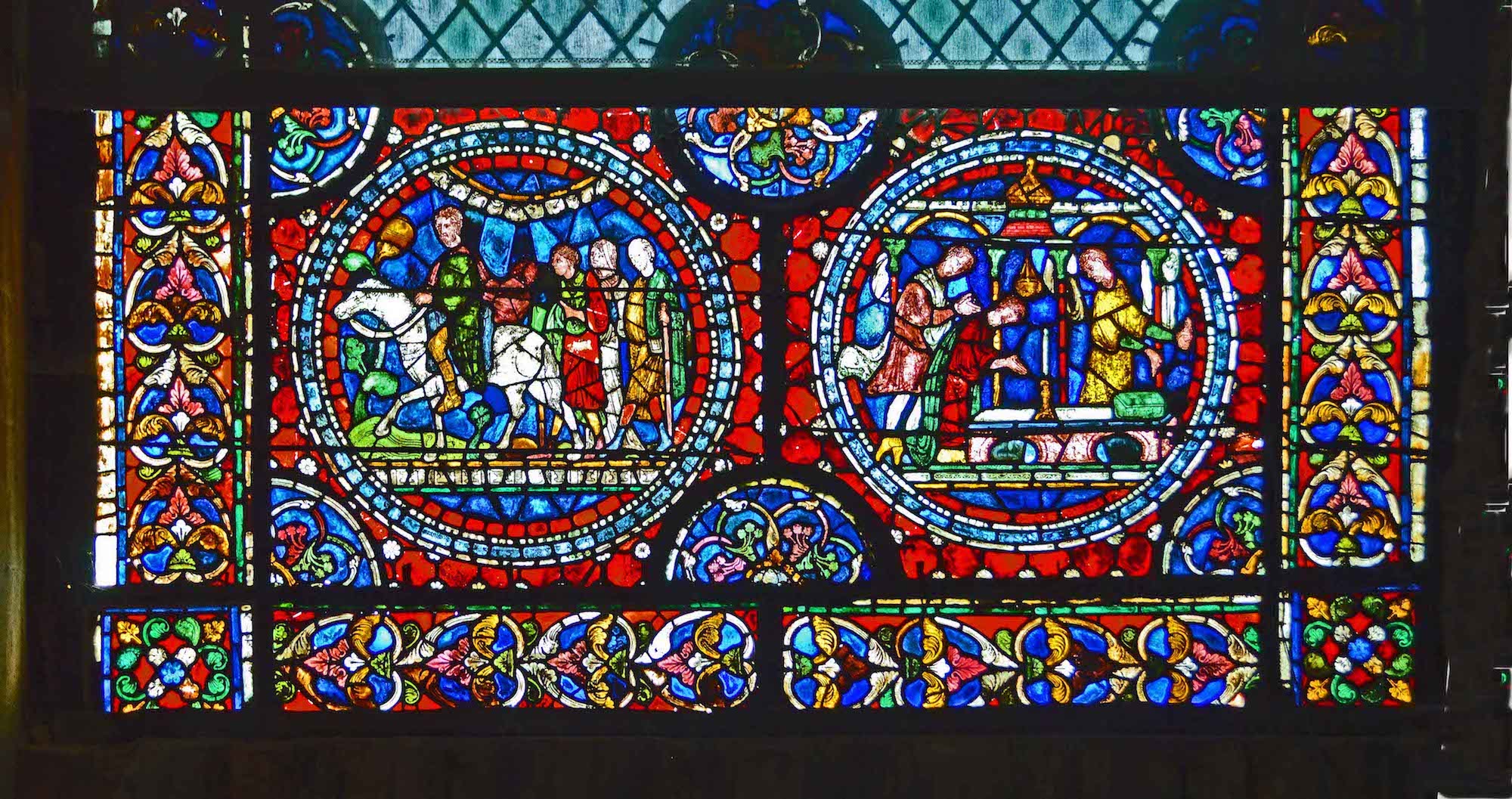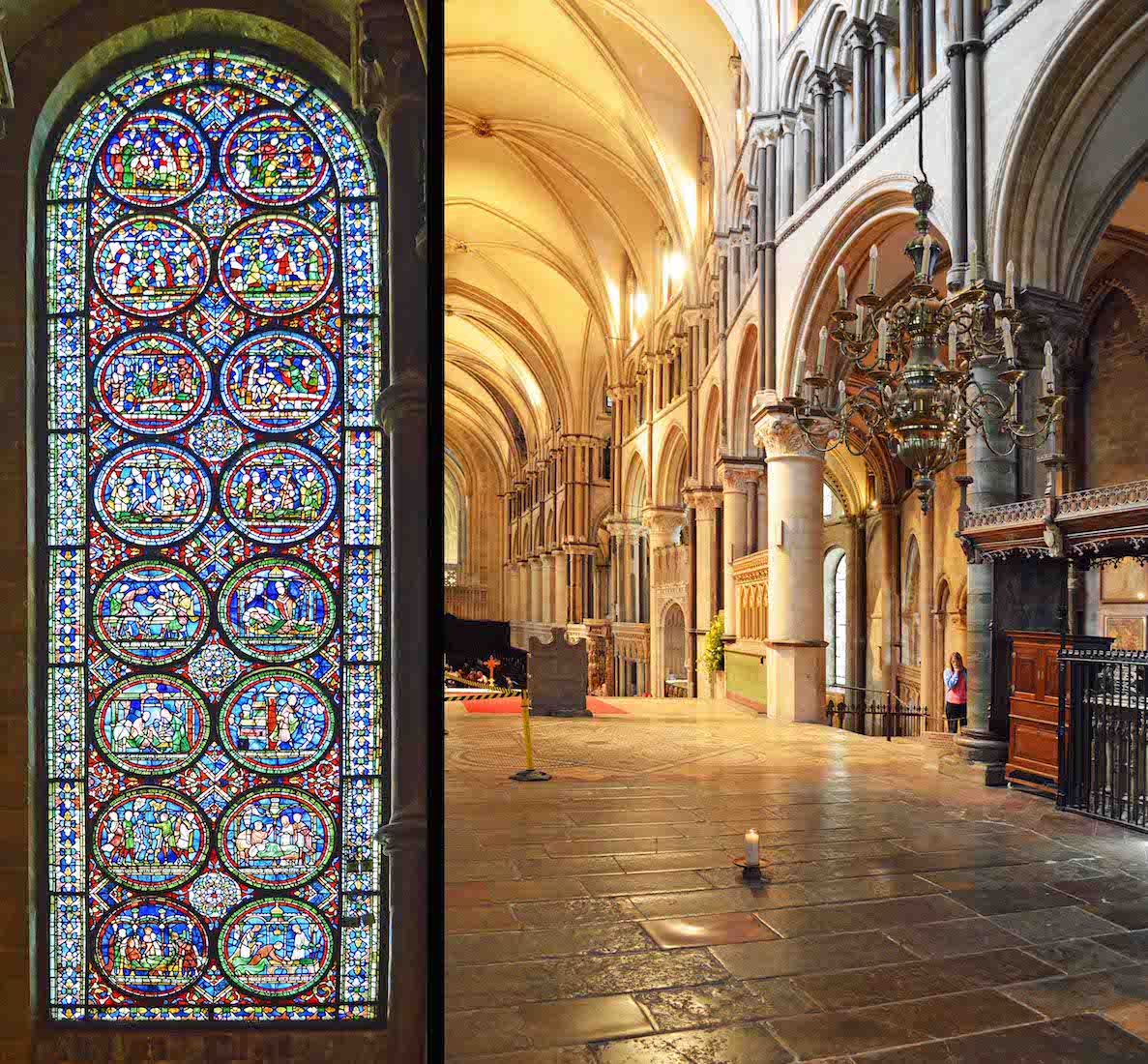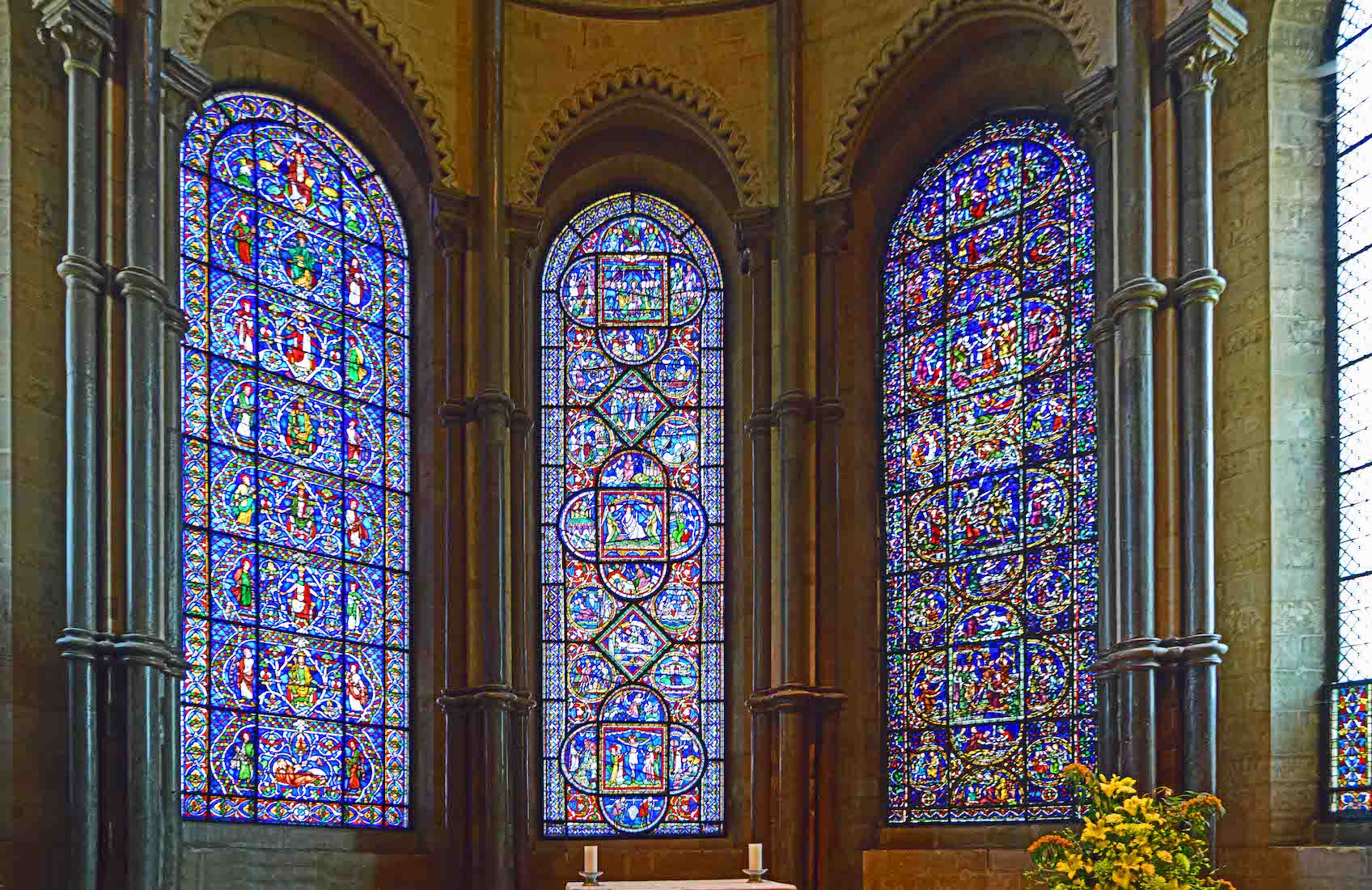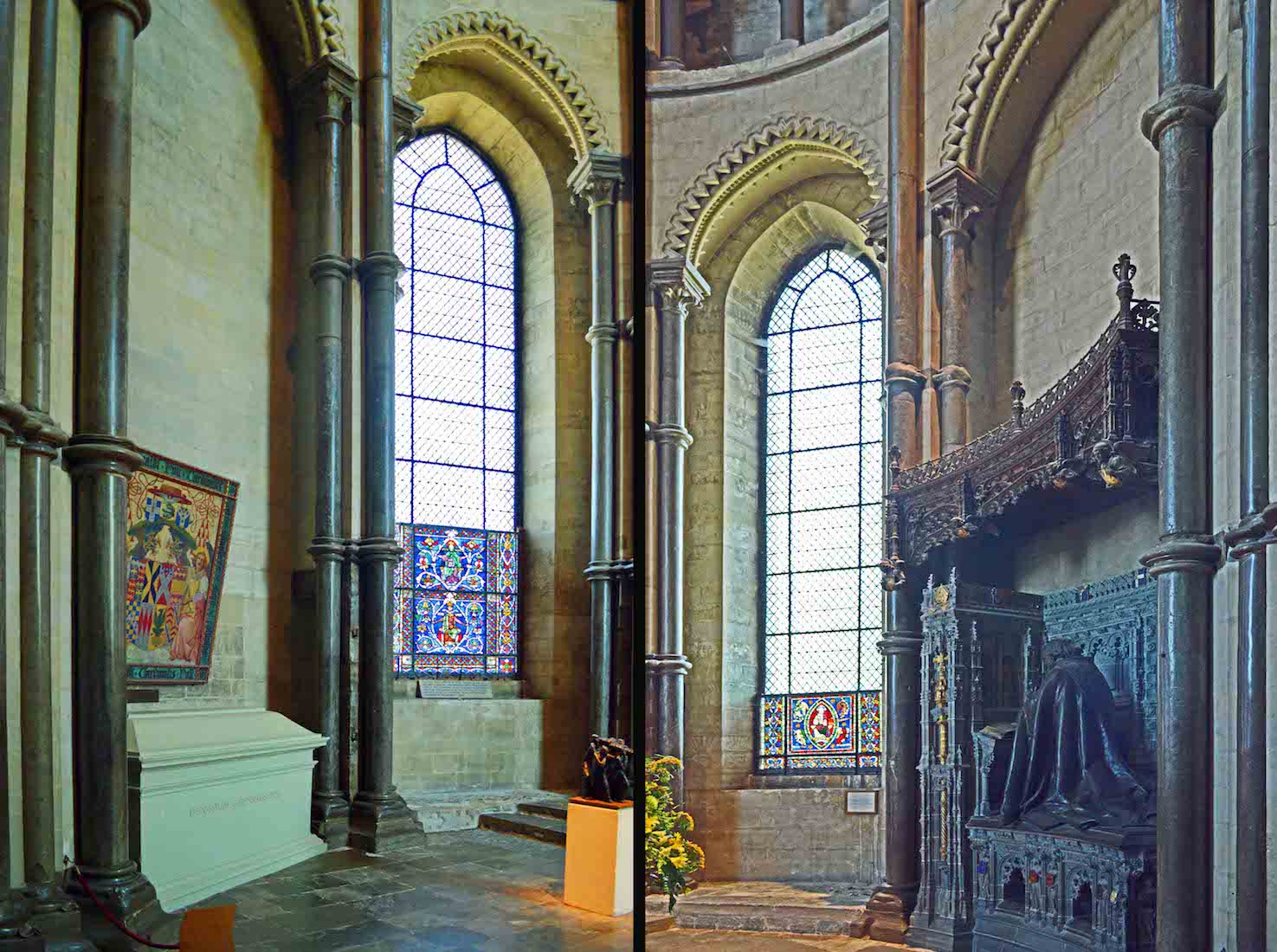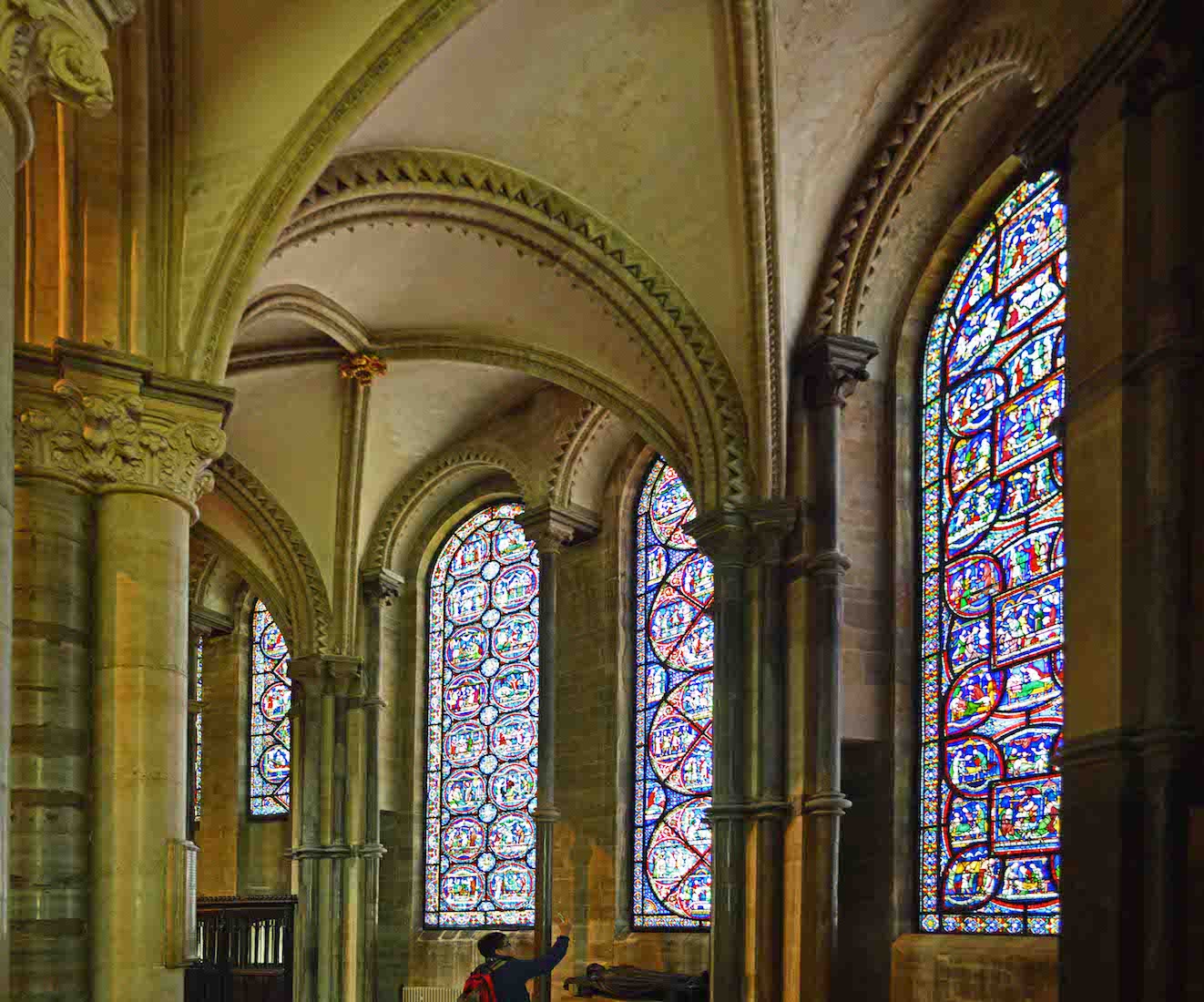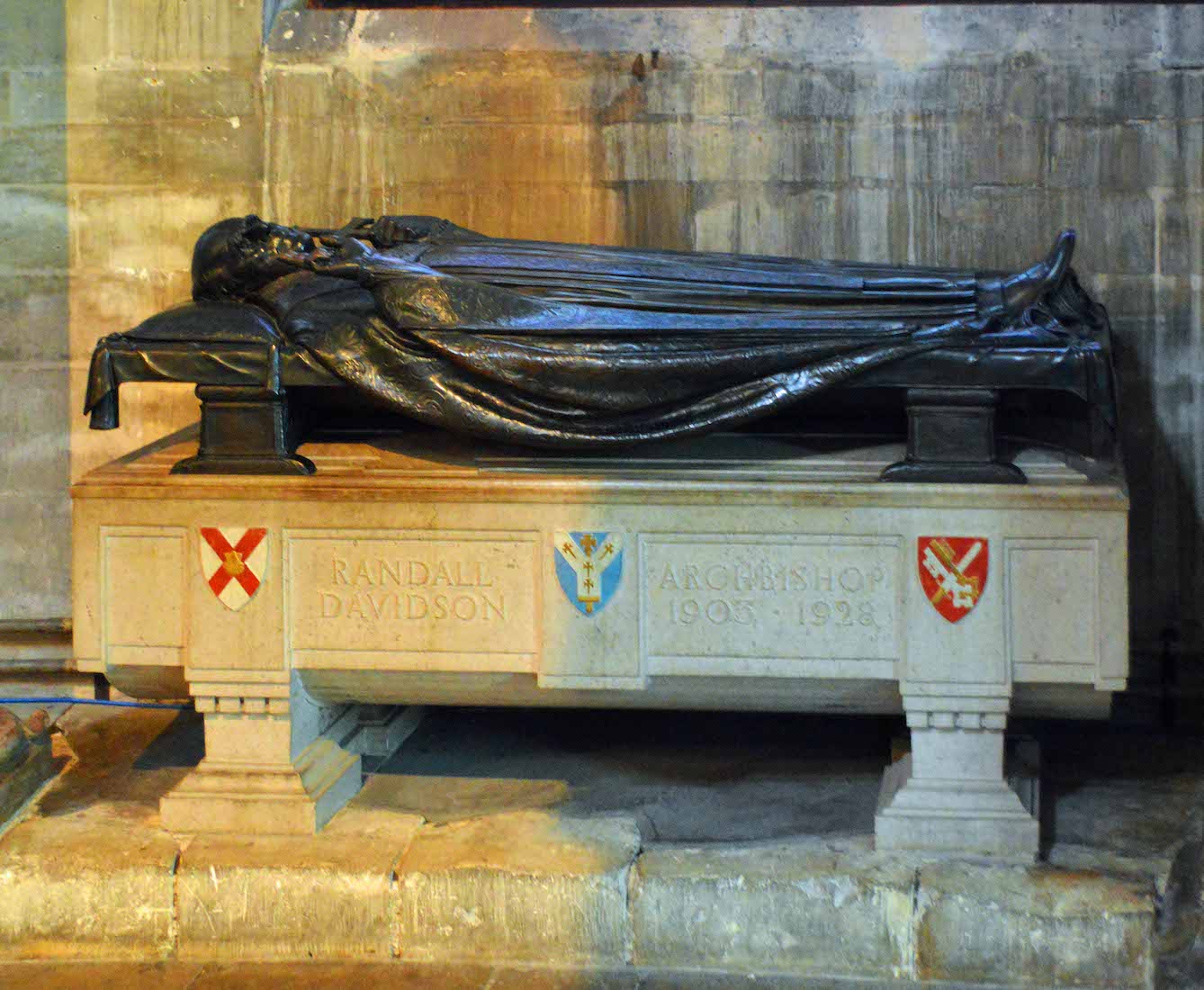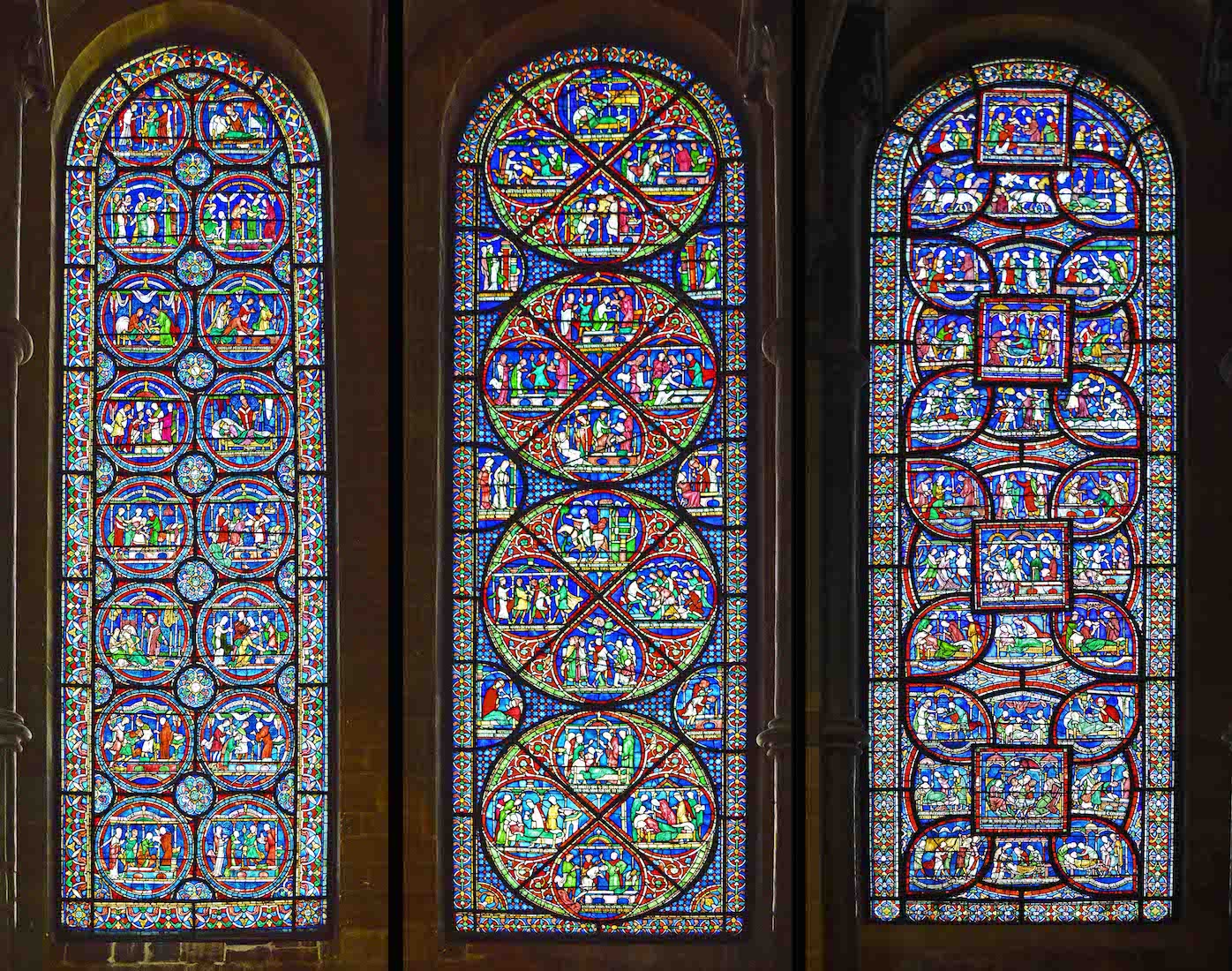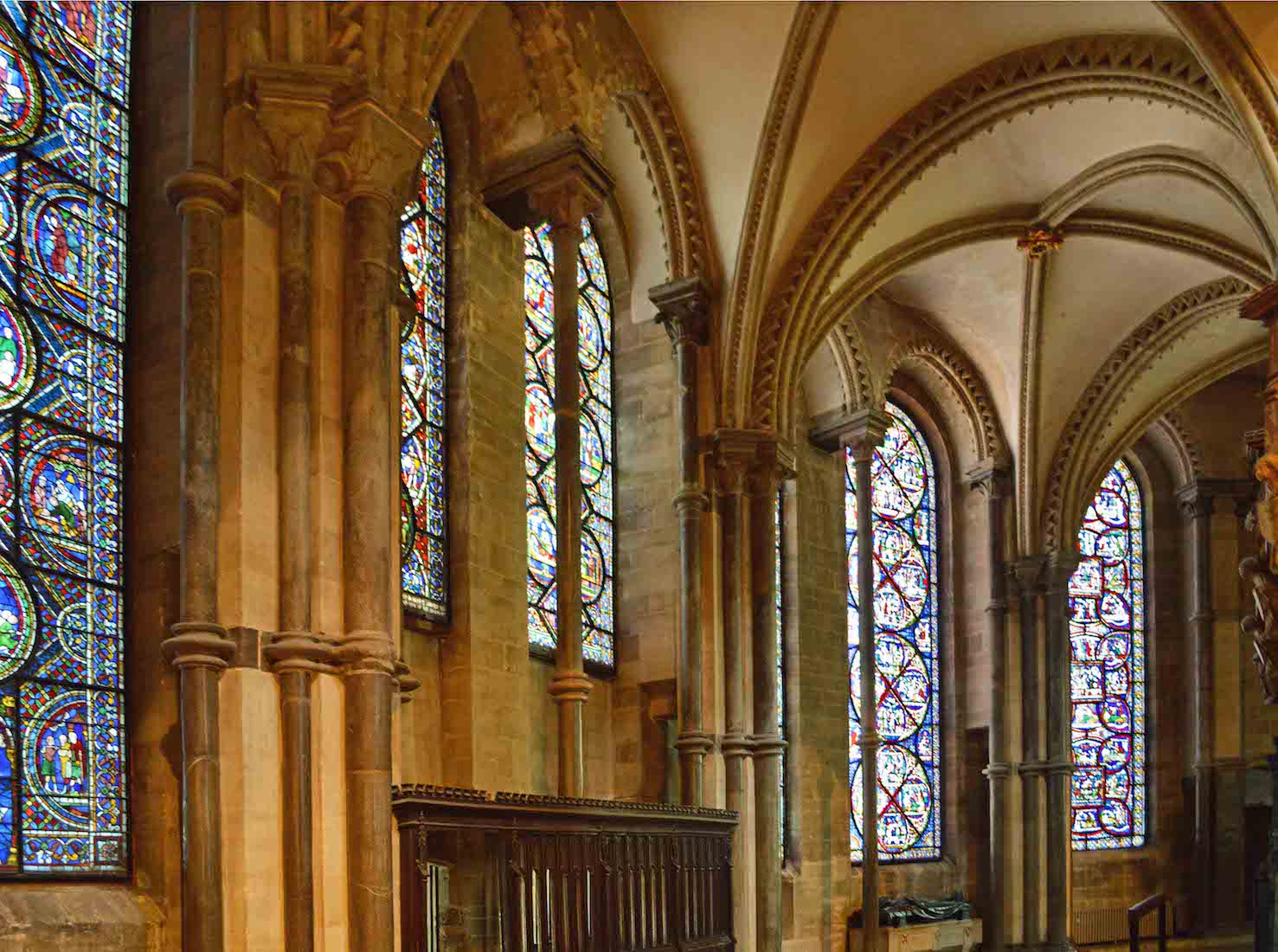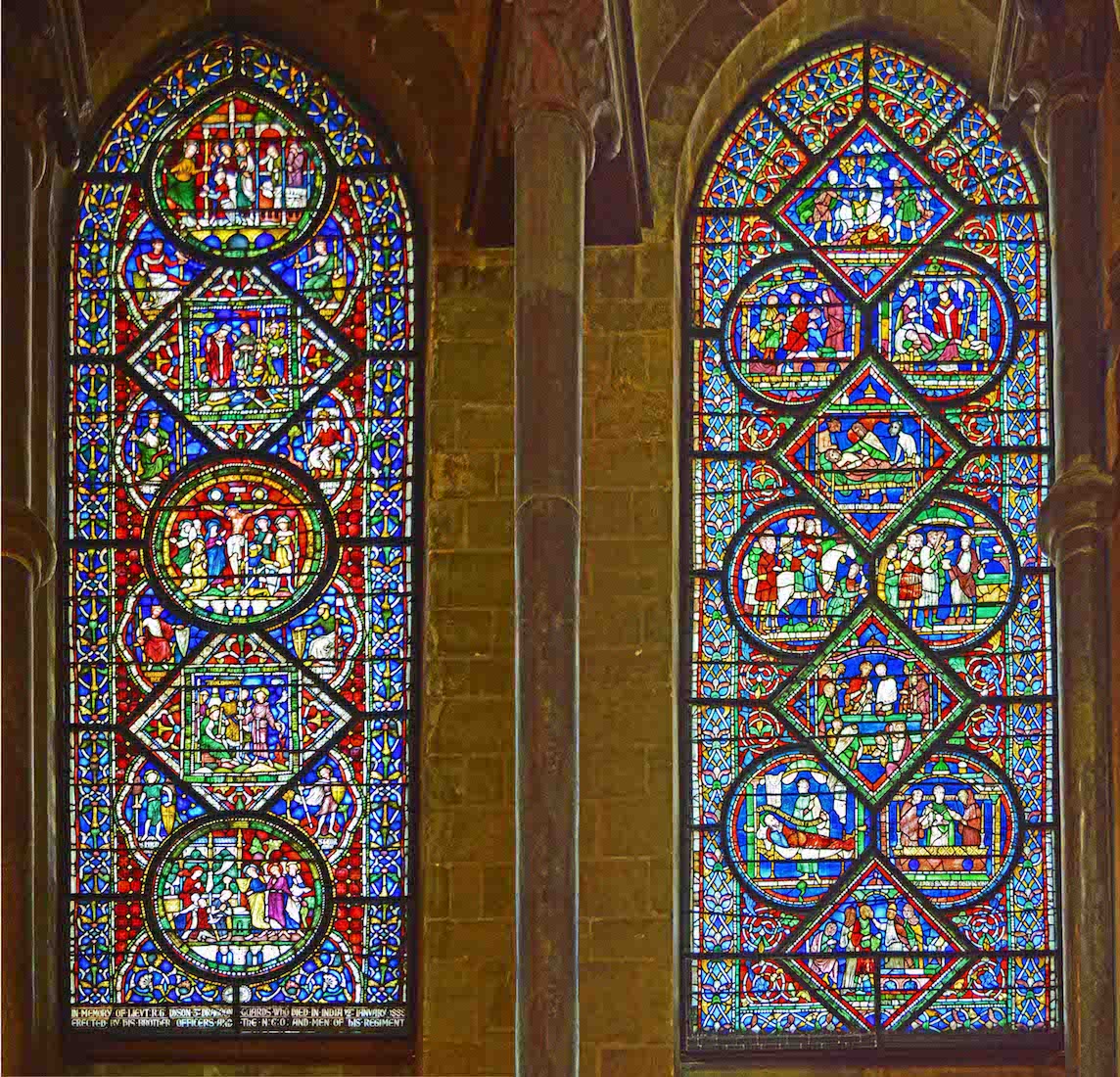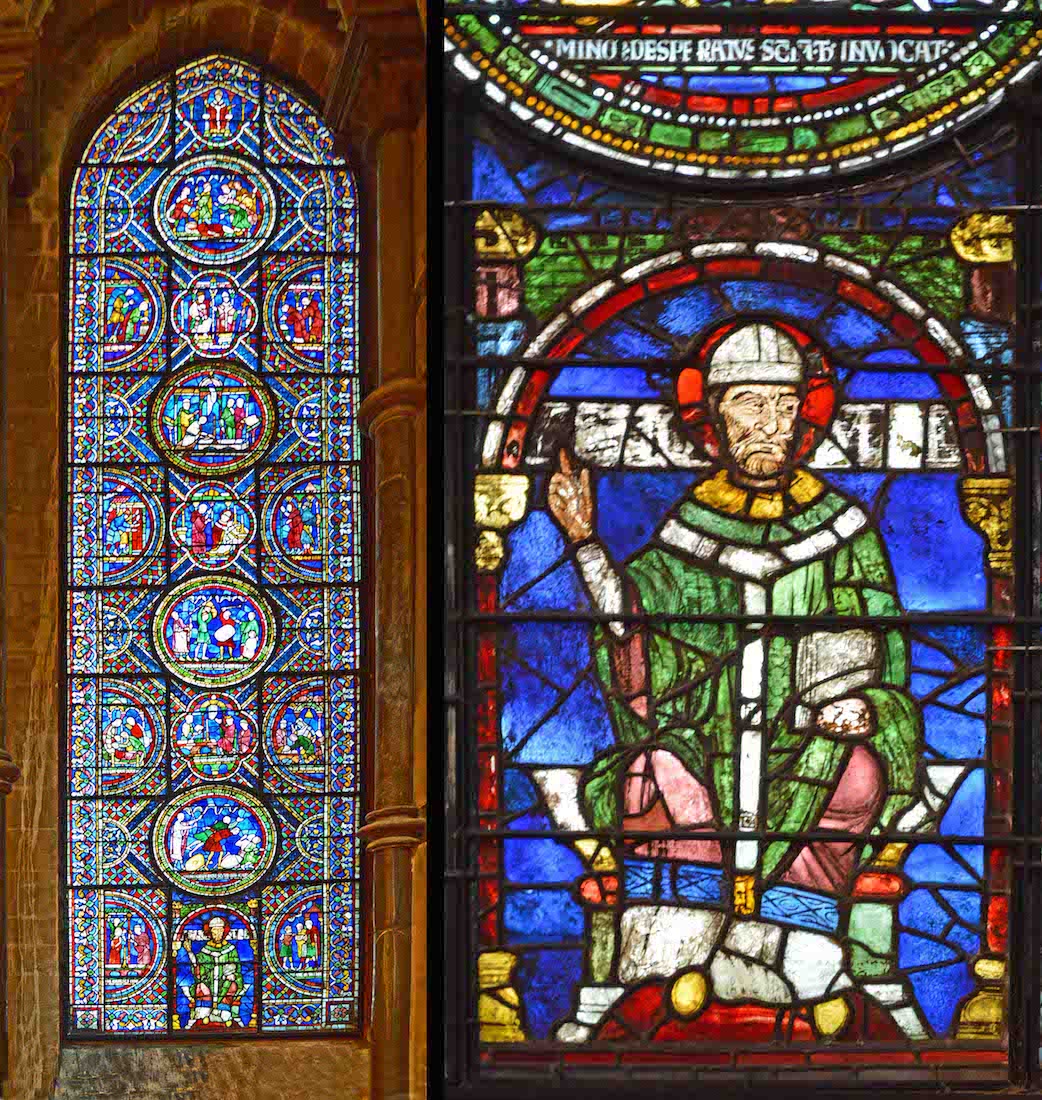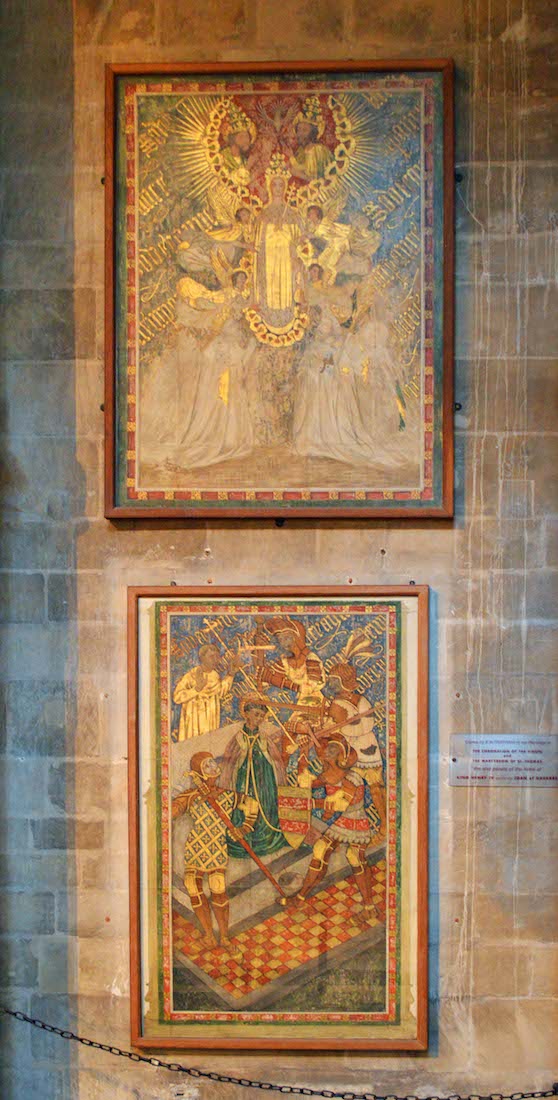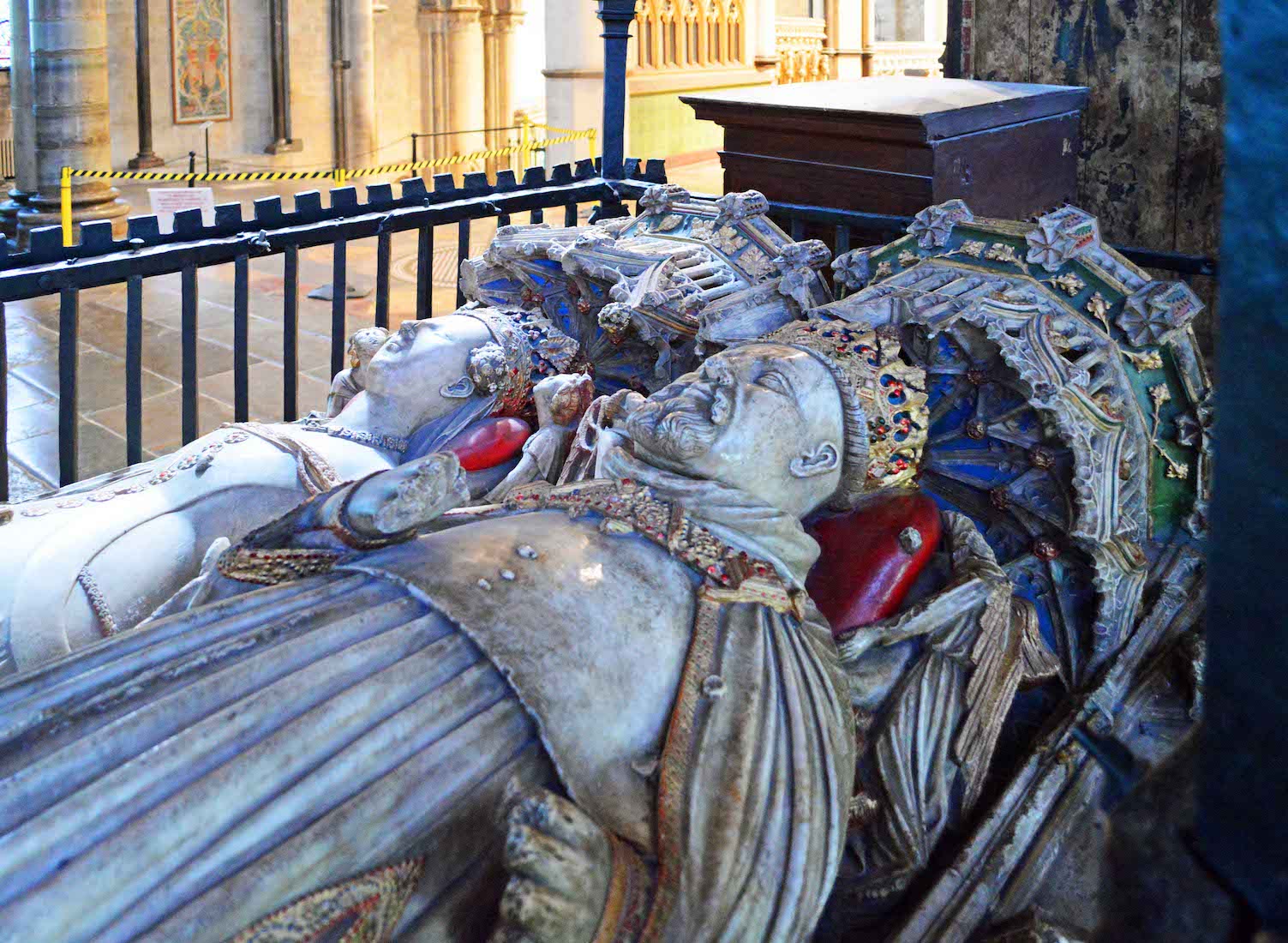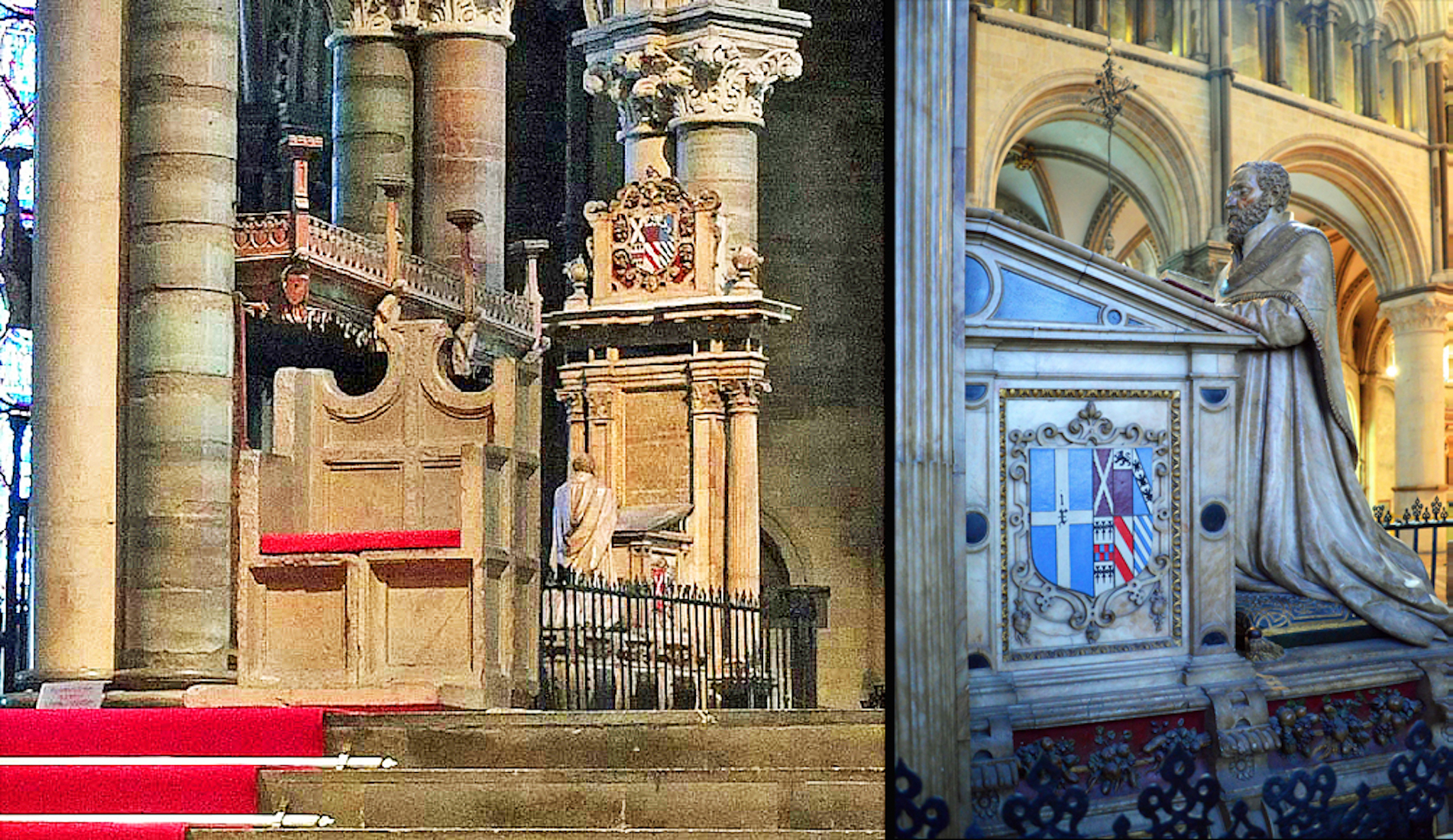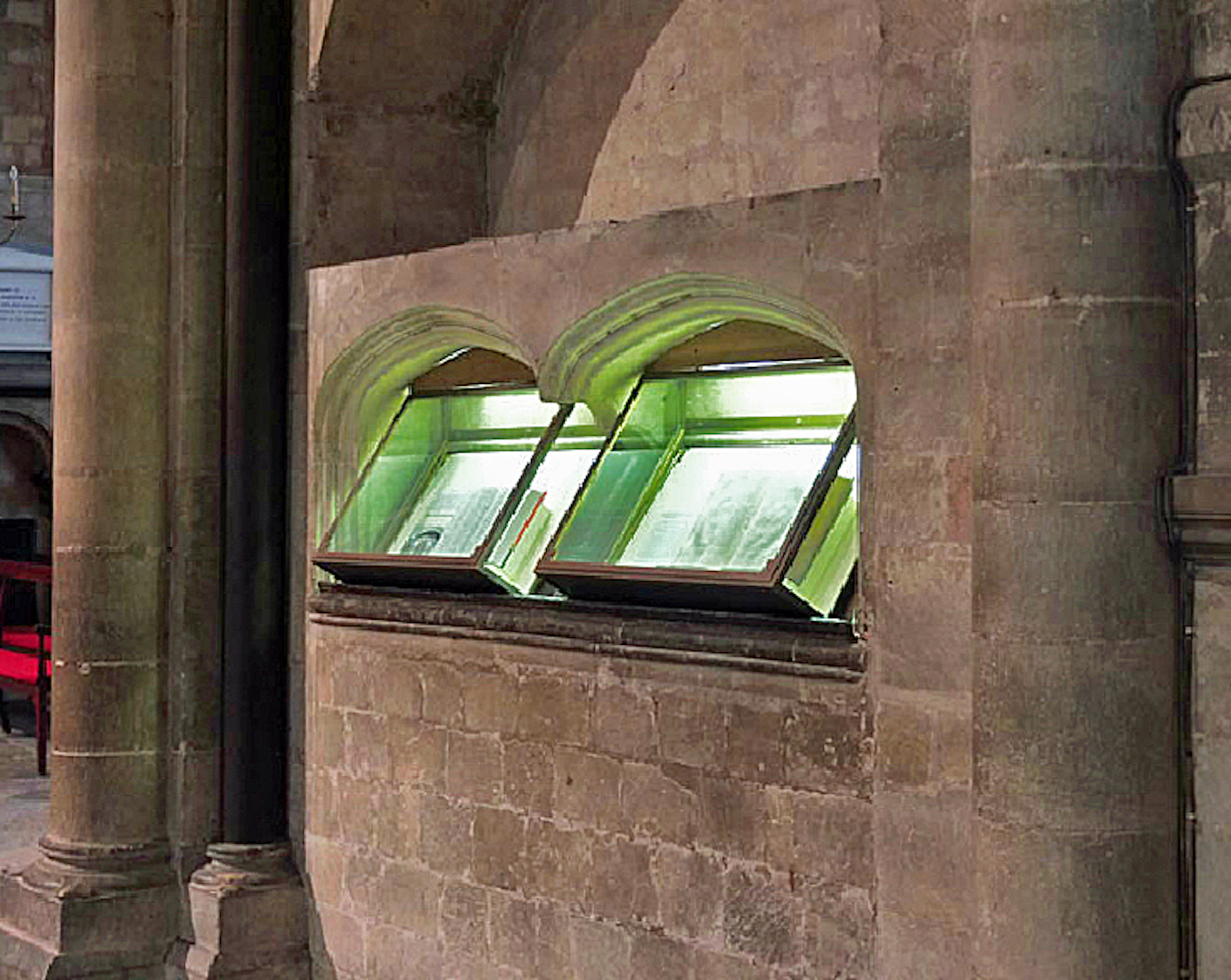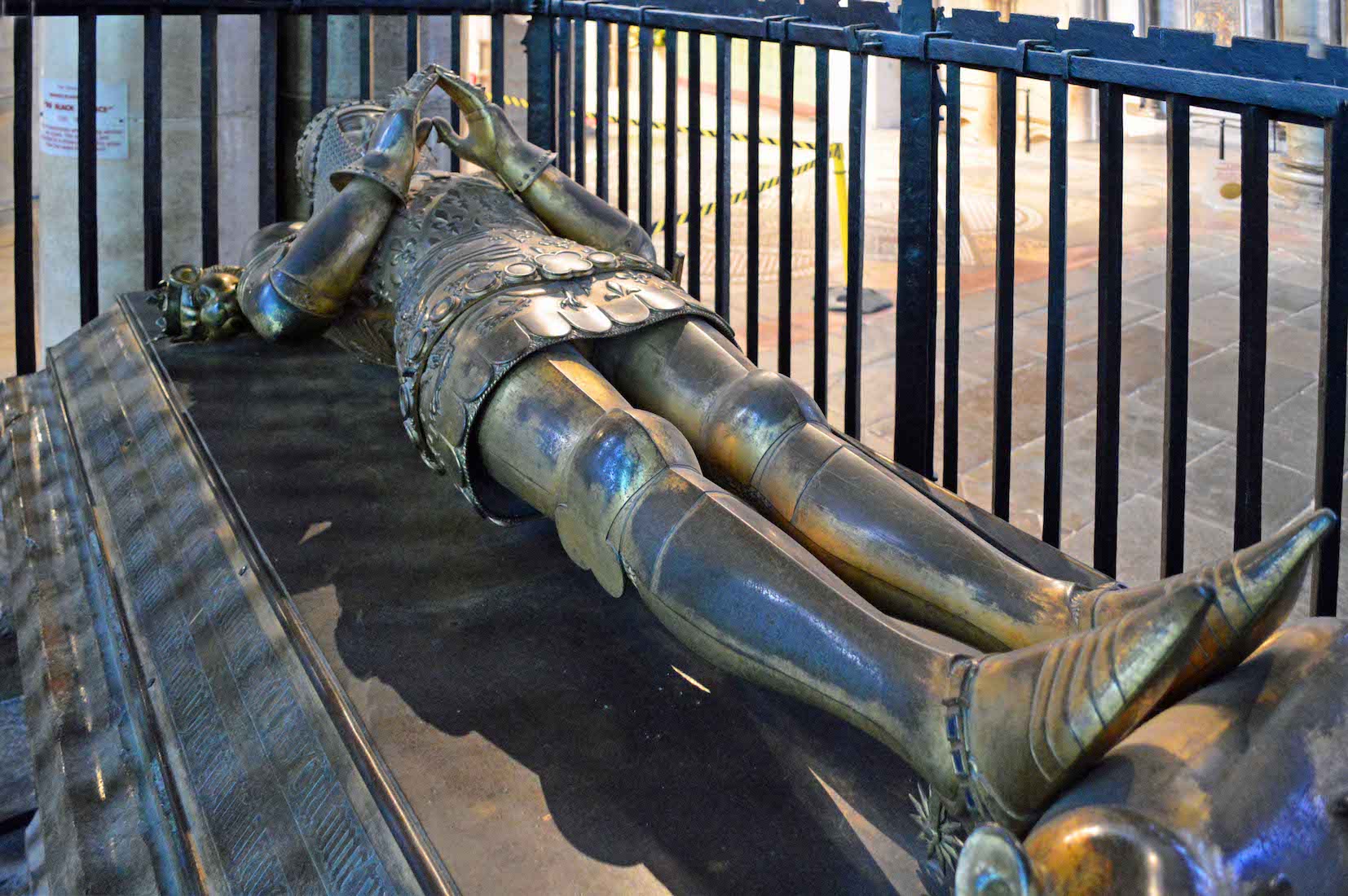
Opposite, and towards the centre of the Trinity Chapel lies the Black Prince in full armour. Edward of Woodstock KG (1330 – 1376), called the Black Prince, was the eldest son of King Edward III and Philippa of Hainault, and the father of King Richard II of England. He was an exceptional military leader, and his victories over the French made him very popular during his lifetime. Edward died one year before his father, becoming the first English Prince of Wales not to become King of England. PLAN
122. ARCHBISHOP COURTENAY
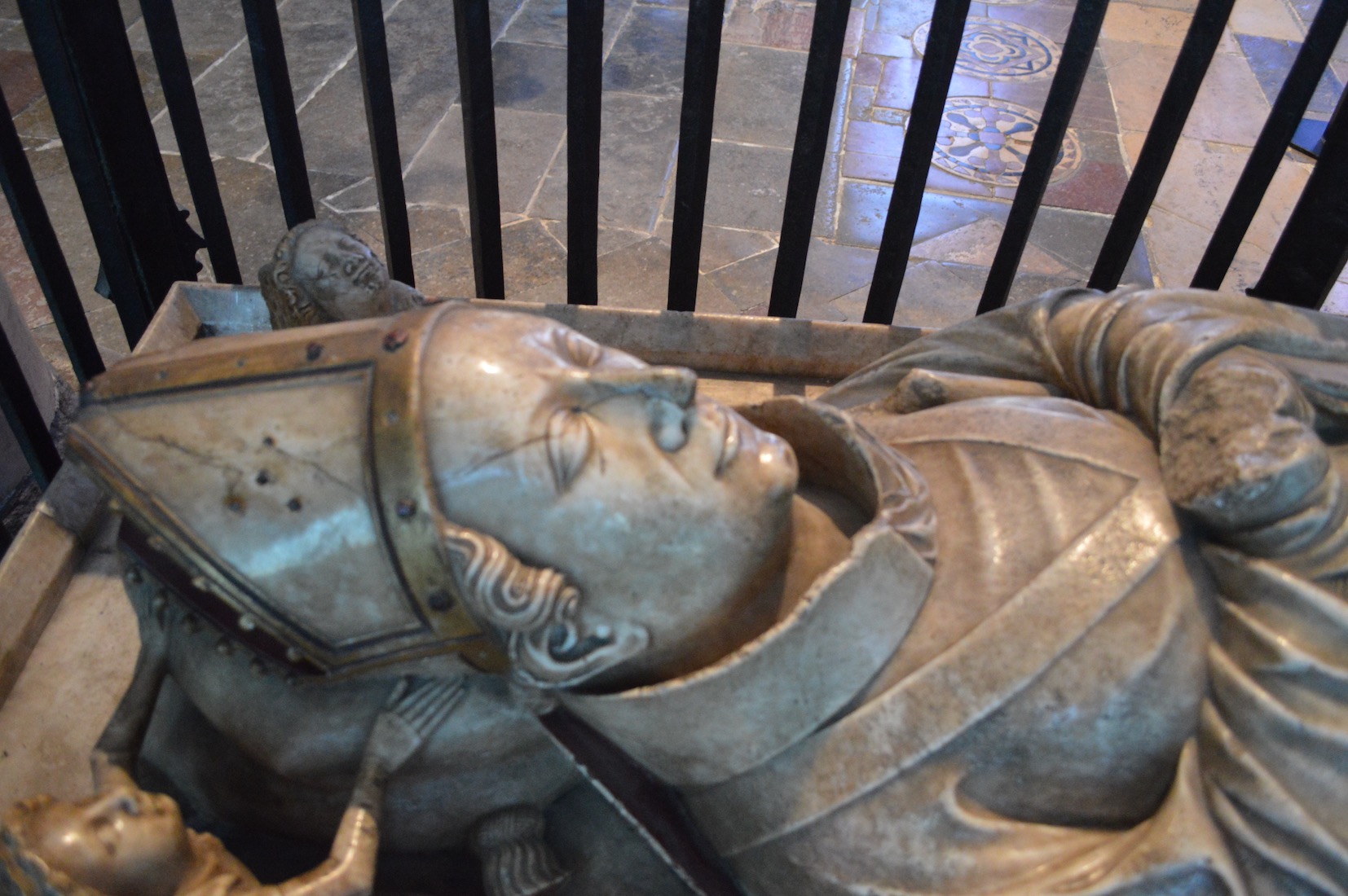
Near the tomb of the Black Prince is the tomb of William Courtenay. Courtenay (c. 1342 – 1396) was Archbishop of Canterbury, having previously been Bishop of Hereford and Bishop of London.
124. WINDOWS AND TOMB
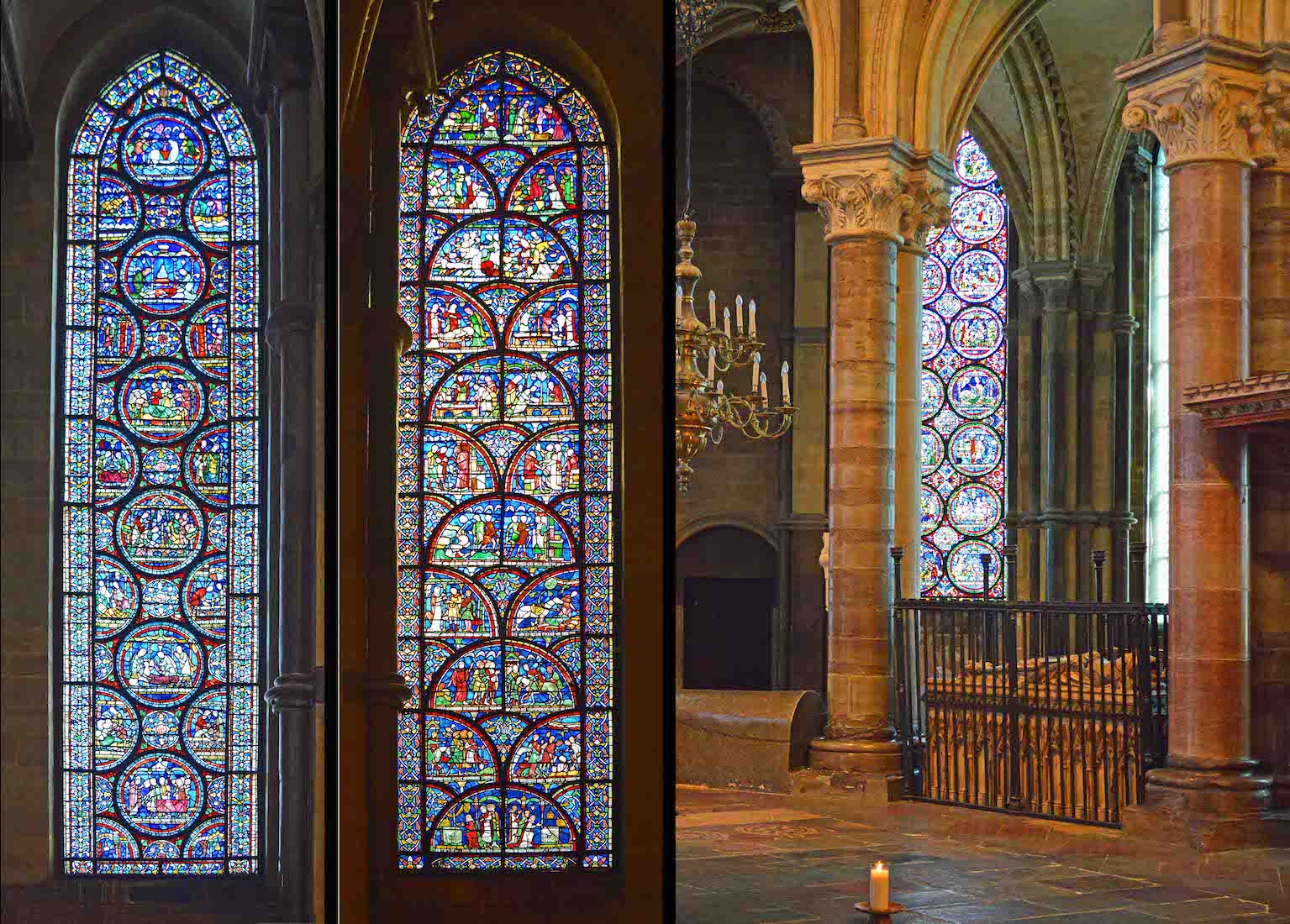
The tomb at right is that of Archbishop Courtenay, and the chest contains the remains of Cardinal Coligny. The Trinity Chapel windows are known as the Miracle Windows. They depict a sequence of miracles posthumously performed by Thomas Becket, recounted in the Canterbury Tales.
125. TRINITY CHAPEL WINDOW PANEL
As we approach the Corona Chapel at the East end of the Cathedral, we come to this window panel. At left are pictured the Canterbury Pilgrims.
126. CHAPEL VIEW TO WEST
The Miracle Windows all have a blue colouration, and demonstrate a variety of geometric patterns. Looking back past the burning candle we see the back of the St Augustine Chair in silhouette
127. THE CORONA CHAPEL
In 1180–4, in place of the old, square-ended, eastern chapel, the present Trinity Chapel was constructed, a broad extension with an ambulatory, designed to house the shrine of St Thomas Becket. A further chapel, circular in plan and shown here, was added beyond that, which housed further relics of Becket, widely believed to have included the top of his skull, struck off in the course of his assassination. This latter chapel became known as the ‘Corona’ or ‘Becket's Crown’.
128. CORONA CHAPEL WINDOWS
The Corona Chapel windows form a grand display. The two right windows are Miracle Windows; the left window is a Jesse Tree window – illustrating the lineage of Christ.
129. TRINITY CHAPEL – NORTH SIDE
We continue walking around the North Ambulatory of the Chapel.
130. MIRACLE WINDOWS
The Miracle Windows exhibit a great complexity of detail within their always varying geometric structure. There were originally 12 Miracle Windows, six on the north side and six on the south side of the shrine of St Thomas in the centre of the Trinity chapel. All the windows were complete by the time of the Translation of St Thomas’ remains from the crypt to the Trinity Chapel in 1220.
131. RANDALL DAVIDSON TOMB
Randall Thomas Davidson, 1st Baron Davidson of Lambeth GCVO PC (1848 – 1930), was an Anglican bishop of Scottish origin who served as Archbishop of Canterbury from 1903 to 1928.
132. MORE WINDOWS
The Miracle Windows are part of a larger series which include Old Testament and New Testament scenes.
133. LOOKING BACK
It is easy to get lost in this complex Cathedral, especially when reconstructing one’s visit from the photographs! I have tried to keep on track by linking the photos. Thus we might compare this photo with its information to #130.
134. TWO MORE WINDOWS
We need some professional help in interpreting these scenes. There is an image of the crucifixion at the centre of the left window.
135. ST THOMAS
This final window in the Trinity Chapel is famous for its image of St Thomas (at the bottom). This is a modern window made of old glass, and shows Thomas fully robed as Archbishop and giving a blessing.
136. PAINTINGS
These paintings depict The Coronation of the Virgin, and The Martyrdom of St Thomas. They are reproductions of the end panels of the tomb of King Henry IV and his wife Joan of Navarre. These paintings are on the wall at the top of the steps as we leave Trinity Chapel.
137. TOMB OF HENRY IV
Directly across Trinity Chapel from the tomb of the Black Prince is the resting place of King Henry IV and his Queen Joan of Navarre. Henry had a disfiguring skin disease which may be shown here.
138. ST AUGUSTINE’S CHAIR
At the West end of Trinity Chapel, in the centre, stands St Augustine’s Chair. This is probably 13th century, and this is where archbishops are enthroned as Primate of all England.
Some distance behind is the Dean Nicholas Wotton (d. 1567) monument.
139. CHAPEL CLERESTORY WINDOWS
Trinity Chapel has a pleasing set of clerestory windows. These are a little more visible than the nave clerestory windows because of the greater floor elevation of the Chapel.
140. OLD BIBLES
We follow down the steps of the North Quire aisle and come to a niche display of two old Bibles [Cathedral photo]. One belonged to Archbishop Thomas Cranmer. The displays change over time.



